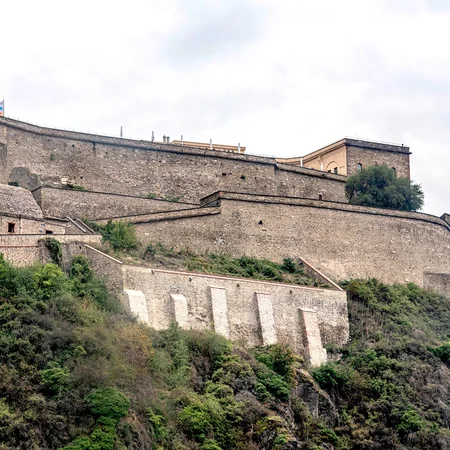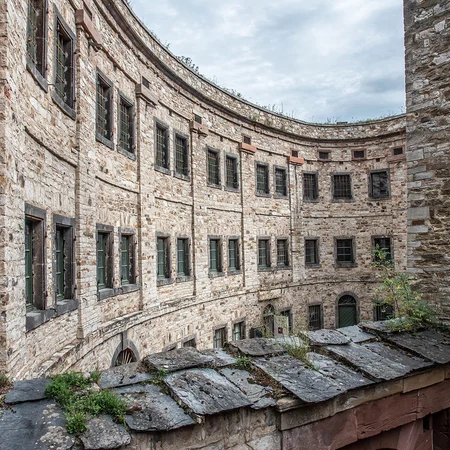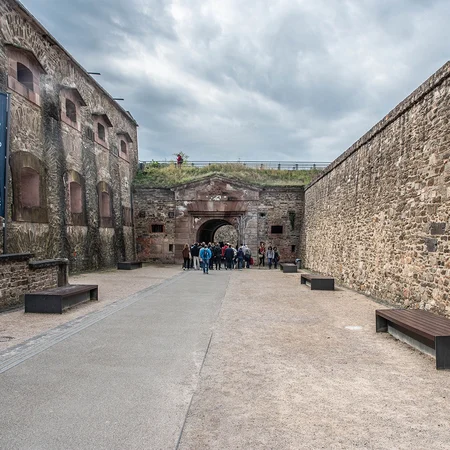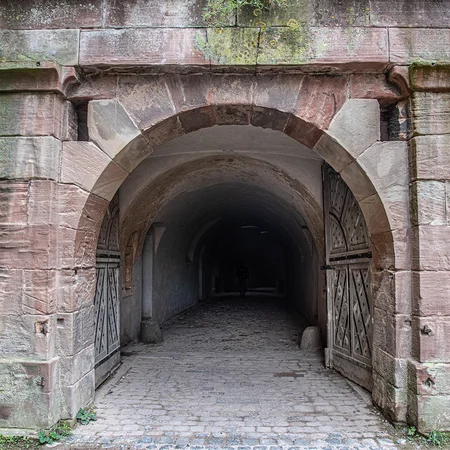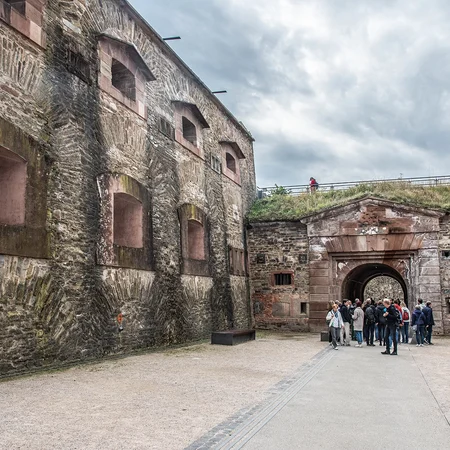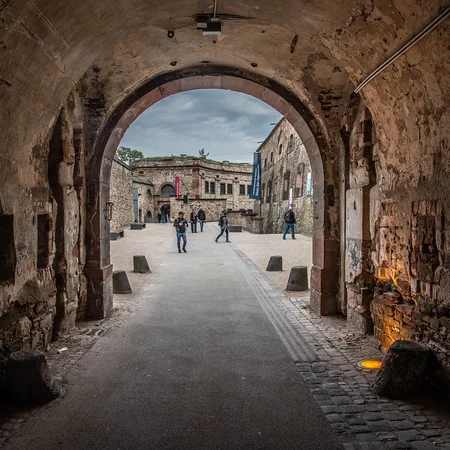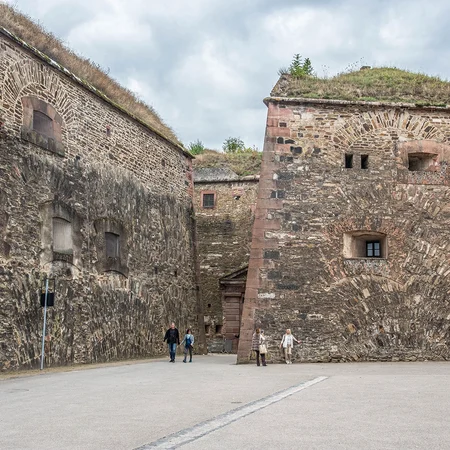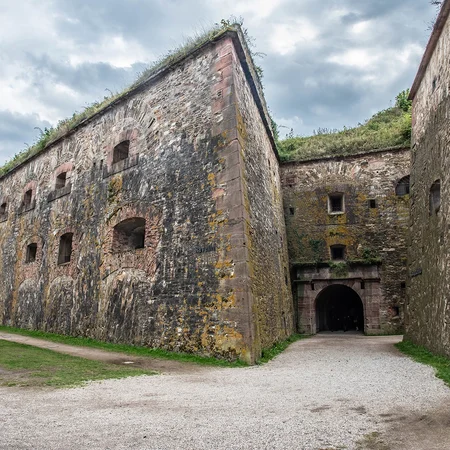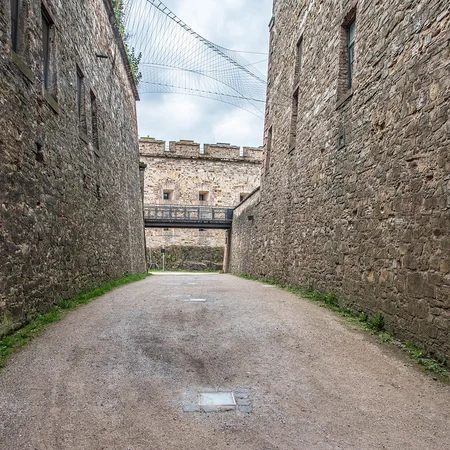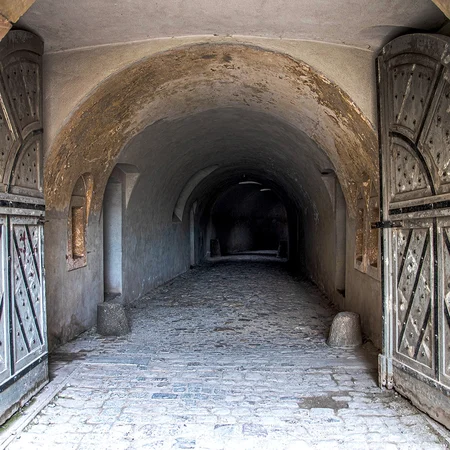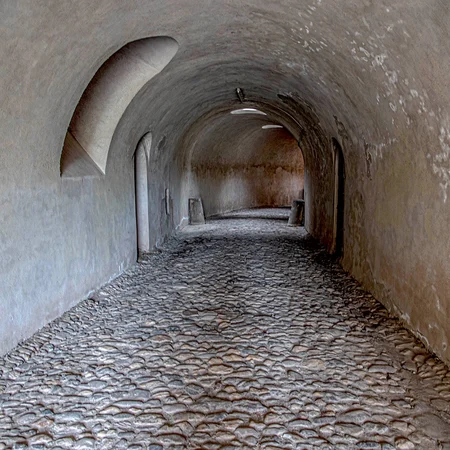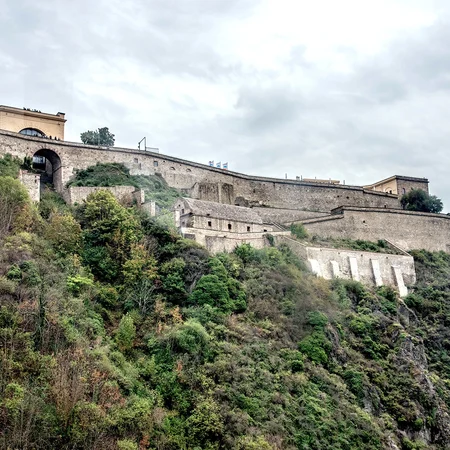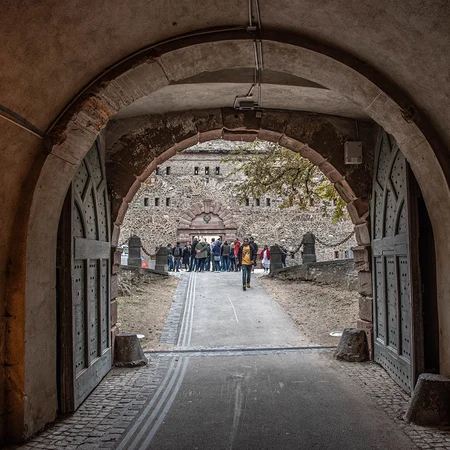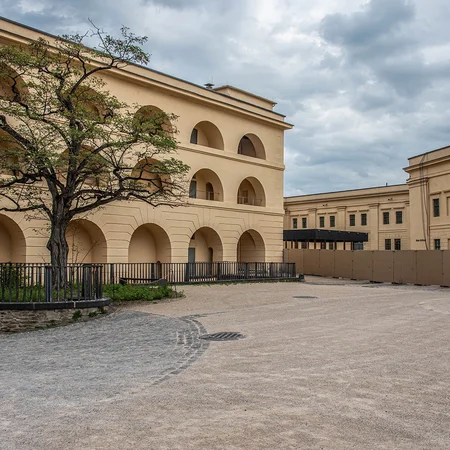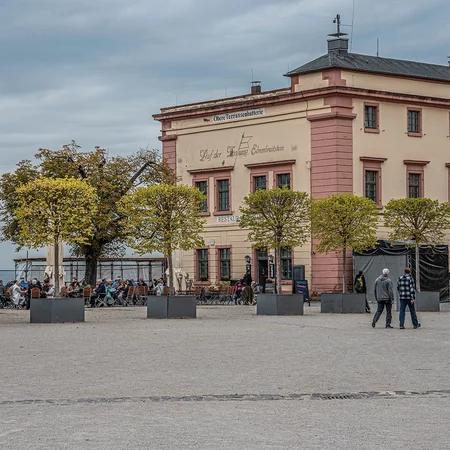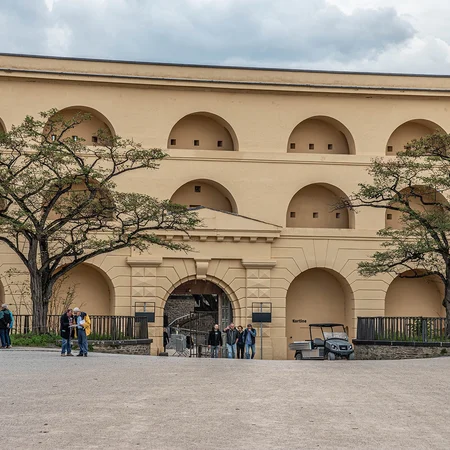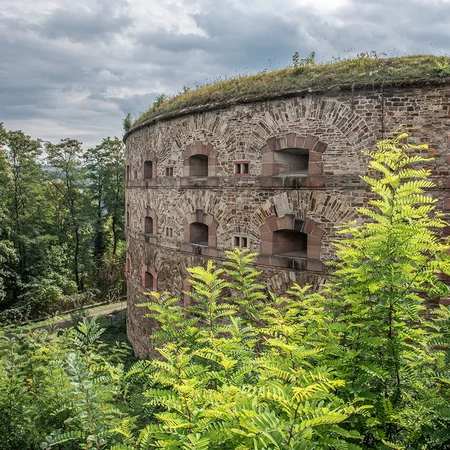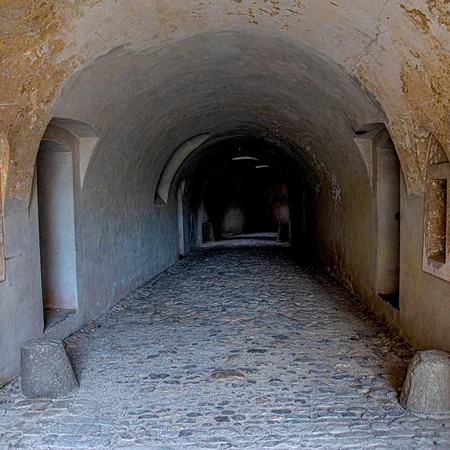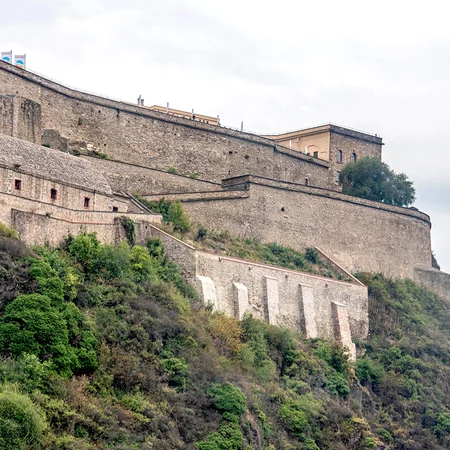A visit to Koblenz is not complete without a visit to Ehrenbreitstein Fortress (Festung Ehrenbreitstein). Situated high above the Rhine, it sits majestically on a hill and cannot be overlooked from afar. The best way to get to the top is by cable car (Seilbahn). This starts on the banks of the Rhine and takes you directly from the city to the fortress. The journey is not only practical, but also an experience in itself. You already have a fantastic view of the Rhine during the journey. You can also marvel at the buildings on the banks and the ever-shrinking Koblenz from above.
Ehrenbreitstein Fortress is situated 118 metres above the Rhine. It is the second largest preserved fortress in Europe after Gibraltar and part of the UNESCO World Heritage Upper Middle Rhine Valley. Take your time to enjoy the different perspectives and the impressive architecture. There is a lot to discover in the fortress. The fortress has three lines of defence: the outer fortification belt, the main defence belt and the inner fortification belt. Every attacker must overcome all the walls and fortifications in order to penetrate the centre of the fortress. The defenders are protected behind thick walls and can strike back through embrasures.
Today you can stroll through the old walls, explore the various bastions and visit the well-preserved casemates. After you have crossed all the defence lines, you will reach the Upper Castle Courtyard – formerly the parade ground of the fortress. From here, you can go directly to the viewpoint with probably the most beautiful view of Koblenz, the German Corner (Deutsches Eck) and the imposing Kaiser Wilhelm monument. Take a moment to enjoy the breathtaking view. The former officers’ mess now houses a restaurant with a beer garden – the perfect place to soak up the special atmosphere of the castle courtyard.
History: Koblenz Ehrenbreitstein Fortress – the second largest preserved fortress in Europe
The origins of Koblenz Fortress date back to the year 1000. Today’s Ehrenbreitstein Fortress was built between 1817 and 1828 by order of the Prussian King Friedrich Wilhelm III. It was intended to serve as a bulwark against possible attacks and was part of a larger defence system. Today, Ehrenbreitstein Fortress is the only surviving Prussian fortress from the 19th century. The fortress in Koblenz has undergone many changes over the centuries and has witnessed numerous historical events. It was besieged by French troops, but was only forced to surrender after two years by starvation. Over the course of time, the fortress served various purposes – as a military bastion, prison and more. Today, it is an important part of Koblenz’s cultural heritage and attracts numerous visitors every year.
Insider tips: Koblenz Ehrenbreitstein Fortress – Visit exhibitions, festivals and events
The history of Ehrenbreitstein Fortress is very interesting. As is the building itself. If you would like to find out more, we recommend taking part in one of the guided tours that are often on offer. The exhibitions that tell you about the history of the fortress and the region are particularly exciting. Here you will find everything from historical weapons to interactive displays. This brings the past to life.
The fortress in Koblenz is also home to four exhibition centres of the Koblenz State Museum. Interesting permanent and temporary exhibitions are on display. The focus is on archaeology, photography, viticulture and the history of enjoyment, business and culture.
Festivals and events are regularly organised at the fortress. These include three-day history games in May. Immerse yourself in the world of the Middle Ages – exciting events and guided tours await you. Find out about the current dates in advance.
Surroundings: Many sights along the Rhine
The Federal Garden Show was held on the Ehrenbreitstein plateau and around the German Corner (Deutsches Eck) and the Electoral Palace in 2011. Many of the grounds are still attractively planted and greened today. Here you can stroll and relax.
If you take the Koblenz cable car back down, you will come to a whole range of sights. Firstly, we recommend you take a walk to the Deutsches Eck. This is where the Moselle and Rhine flow together. Together with the imposing Kaiser Wilhelm Monument, this is a first-class sight. If you walk in the other direction along the Rhine, you will come to the historic Basilica of St Castor in Koblenz. It is surrounded by beautiful gardens. It’s worth taking a leisurely stroll around it. A little further on is the Electoral Palace of Koblenz. Here, too, there are lively gardens. As you can see, you can combine culture and nature. And there’s one more thing: There are lovely cafés and restaurants along the Rhine where you can stop for a bite to eat.

